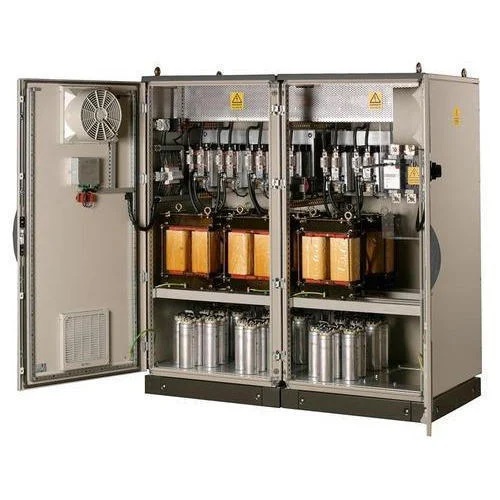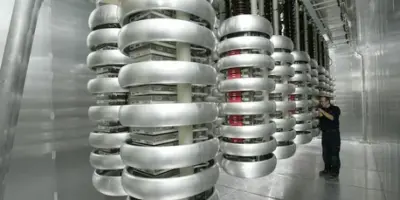The global tuned passive harmonic filter market is projected to reach in 2022 valued at USD 1008.28 million. USD 2010.86 million in 2033, with a rate CAGR of 7.15% during 2024-2033
1. Introduction Tuned passive harmonic filters are crucial components in power systems designed to mitigate harmonic distortion and improve power quality. These filters are widely used across various industries, including manufacturing, utilities, and commercial buildings, to ensure stable and efficient operation of electrical equipment. This market overview provides insights into the dynamics, technological trends, customer analysis, market trends, investment opportunities, regulatory landscape, supply chain analysis, and pricing analysis of the tuned passive harmonic filter market.
2. Market Dynamics
2.1 Growth Drivers
- Increasing Power Quality Concerns: With the proliferation of non-linear loads such as variable frequency drives (VFDs) and power electronics, harmonic distortion has become a significant concern for power systems. Tuned passive harmonic filters help mitigate harmonic currents and voltages, thereby improving power quality and system reliability.
- Regulatory Mandates: Regulatory bodies across the globe have imposed stringent standards and guidelines to ensure power quality and mitigate harmonic distortion. Compliance with these regulations drives the adoption of tuned passive harmonic filters in industrial and commercial applications.
- Rising Demand for Energy Efficiency: Tuned passive harmonic filters help reduce power losses and improve the efficiency of electrical systems by eliminating harmonic distortion. As energy efficiency gains importance in various industries, the demand for harmonic mitigation solutions including harmonic filters is expected to increase.
- Expansion of Renewable Energy Integration: The integration of renewable energy sources such as solar and wind power introduces fluctuations and harmonics into the grid. Tuned passive harmonic filters play a vital role in managing these harmonics and maintaining grid stability, driving their adoption in renewable energy applications.
2.2 Challenges
- Complexity of Harmonic Analysis: Designing effective harmonic mitigation solutions requires thorough harmonic analysis of the power system. The complexity involved in identifying harmonic sources, frequencies, and magnitudes can pose challenges for the implementation of tuned passive harmonic filters.
- Cost Considerations: The upfront cost of installing tuned passive harmonic filters can be significant, particularly for large-scale industrial applications. Cost-conscious consumers may hesitate to invest in harmonic mitigation solutions unless they can demonstrate tangible benefits and return on investment.
- Compatibility Issues: Ensuring compatibility between tuned passive harmonic filters and existing power system components is crucial for optimal performance. Compatibility challenges may arise due to differences in impedance, resonance frequencies, and system configurations, requiring careful engineering and testing.
3. Technological Trends
- Advanced Filtering Techniques: Manufacturers are continuously innovating to develop advanced filtering techniques that offer superior harmonic mitigation performance. These techniques may include hybrid filters combining passive and active components, adaptive filtering algorithms, and digital signal processing (DSP) based solutions.
- Integration with Power Electronics: Integration of tuned passive harmonic filters with power electronic devices such as VFDs and uninterruptible power supplies (UPS) enhances their effectiveness in mitigating harmonics generated by these loads. Close coordination between filter and load design optimizes harmonic suppression and system compatibility.
- Smart Grid Integration: With the evolution of smart grid technologies, there is a trend towards the integration of intelligent features into harmonic filters. Smart filters equipped with sensors, communication interfaces, and control algorithms enable real-time monitoring, diagnostics, and adaptive control, enhancing overall system performance.
4. Customer Analysis
- Industrial Sector: Industries with sensitive equipment and critical processes, such as manufacturing, petrochemicals, and pharmaceuticals, are primary customers for tuned passive harmonic filters. These filters help protect equipment from voltage fluctuations and harmonic-related damage, ensuring uninterrupted production and minimizing downtime.
- Utilities and Power Distribution: Utilities and power distribution companies utilize tuned passive harmonic filters to maintain grid stability and power quality. These filters mitigate harmonics generated by industrial and commercial customers, preventing grid disturbances and equipment damage.
- Commercial Buildings: Commercial buildings, including offices, data centers, and healthcare facilities, rely on tuned passive harmonic filters to ensure reliable operation of electrical systems and sensitive equipment. Harmonic mitigation solutions contribute to energy efficiency, equipment longevity, and occupant comfort in these environments.
5. Market Trends and Forecast
- Growth in Industrial Automation: The increasing adoption of automation technologies in industrial sectors drives the demand for tuned passive harmonic filters. Automation systems often incorporate VFDs and other non-linear loads, leading to harmonic distortion issues that require effective mitigation solutions.
- Expansion of Renewable Energy Infrastructure: The growing deployment of renewable energy sources necessitates harmonic mitigation measures to ensure grid stability and power quality. Tuned passive harmonic filters play a critical role in integrating renewable energy into the grid while maintaining compliance with regulatory standards.
- Focus on Energy Efficiency: Energy-conscious industries and commercial entities prioritize energy efficiency measures, including harmonic mitigation. Tuned passive harmonic filters contribute to energy savings by reducing power losses associated with harmonic distortion, driving their adoption in energy-intensive applications.
Receive the FREE Sample Report of Tuned Passive Harmonic Filter Market Research Insights @ https://stringentdatalytics.com/sample-request/tuned-passive-harmonic-filter-market/7994/
Market Segmentations:
Global Tuned Passive Harmonic Filter Market: By Company
• Eaton
• ABB
• Comsys AB
• Schneider Electric
• DELTA US
• Siemens
• Crompton Greaves
• Emerson Electric
• Schaffner Holding
• MTE Corporation
• Danfoss
• TDK Electronics
• TCI
• Elspec
Global Tuned Passive Harmonic Filter Market: By Type
• Single Tuned Filters
• Double Tuned Filters
• Triple Tuned Filters
Global Tuned Passive Harmonic Filter Market: By Application
• Industrial
• Commercial
• Residential
Regional Analysis of Global Tuned Passive Harmonic Filter Market
All the regional segmentation has been studied based on recent and future trends, and the market is forecasted throughout the prediction period. The countries covered in the regional analysis of the Global Tuned Passive Harmonic Filter market report are U.S., Canada, and Mexico in North America, Germany, France, U.K., Russia, Italy, Spain, Turkey, Netherlands, Switzerland, Belgium, and Rest of Europe in Europe, Singapore, Malaysia, Australia, Thailand, Indonesia, Philippines, China, Japan, India, South Korea, Rest of Asia-Pacific (APAC) in the Asia-Pacific (APAC), Saudi Arabia, U.A.E, South Africa, Egypt, Israel, Rest of Middle East and Africa (MEA) as a part of Middle East and Africa (MEA), and Argentina, Brazil, and Rest of South America as part of South America.
Click to Purchase Tuned Passive Harmonic Filter Market Research Report @ https://stringentdatalytics.com/purchase/tuned-passive-harmonic-filter-market/7994/
Investment Opportunities
- Product Innovation: Investing in research and development to enhance the performance and functionality of tuned passive harmonic filters presents significant opportunities for market players. Innovations in filter design, materials, and integration capabilities can differentiate products and capture new market segments.
- Market Expansion: Expanding into emerging markets with growing industrialization and infrastructure development offers strategic growth opportunities for harmonic filter manufacturers. Establishing partnerships and distribution channels in these regions can facilitate market penetration and revenue growth.
- Service Offerings: Offering comprehensive services such as harmonic analysis, system modeling, and consulting enhances the value proposition for customers and fosters long-term relationships. Service-oriented business models can complement product sales and generate recurring revenue streams.
7. Regulatory Landscape
- International Standards: International organizations such as the International Electrotechnical Commission (IEC) and the Institute of Electrical and Electronics Engineers (IEEE) establish standards and guidelines related to harmonic distortion and power quality. Compliance with these standards is essential for harmonic filter manufacturers to ensure product performance and market acceptance.
- National Regulations: Many countries have implemented national regulations and codes governing power quality, harmonic limits, and harmonic mitigation strategies. Harmonic filter manufacturers must stay abreast of relevant regulations in target markets and ensure that their products meet regulatory requirements.
- Certification and Compliance: Obtaining certifications and compliance documentation from accredited testing laboratories demonstrates product conformity with regulatory standards and industry specifications. Certification marks such as CE (Conformité Européenne) and UL (Underwriters Laboratories) enhance product credibility and market competitiveness.
8. Supply Chain Analysis
- Component Sourcing: The supply chain for tuned passive harmonic filters encompasses various components such as capacitors, inductors, resistors, and enclosures. Manufacturers source these components from suppliers with established quality assurance processes to ensure product reliability and performance.
- Manufacturing Processes: Tuned passive harmonic filters undergo assembly, testing, and quality control processes before being released to the market. Advanced manufacturing techniques such as automated assembly, surface mount technology (SMT), and robotic testing improve efficiency and consistency in filter production.
- Distribution and Logistics: Distribution channels for harmonic filters include direct sales, distributors, and authorized resellers. Efficient logistics and inventory management are essential for timely delivery and customer satisfaction, especially for customized or high-value filter solutions.
9. Pricing Analysis
- Cost Structure: The pricing of tuned passive harmonic filters is influenced by factors such as component costs, manufacturing complexity, technology features, and market demand. High-quality components and advanced design features may command premium prices compared to standard filter solutions.
- Competitive Dynamics: Pricing strategies in the harmonic filter market are influenced by competitive dynamics, including the presence of established players, market share considerations, and differentiation strategies. Market leaders may leverage economies of scale to offer competitive pricing, while niche players may focus on value-added features to justify higher prices.
- Price Trends: Price trends in the tuned passive harmonic filter market are influenced by supply and demand dynamics, technological advancements, and regulatory developments. Market research and competitive analysis are essential for monitoring price trends and adjusting pricing strategies to remain competitive in the market.
10. Conclusion The tuned passive harmonic filter market is driven by factors such as increasing power quality concerns, regulatory mandates, and the expansion of renewable energy infrastructure. Technological trends such as advanced filtering techniques, integration with power electronics, and smart grid integration are reshaping the market landscape. Investment opportunities exist in product innovation, market expansion, and service offerings. Regulatory compliance, supply chain management, and pricing strategies are critical considerations for market players seeking to capitalize on the growing demand for tuned passive harmonic filters in diverse applications.
About Stringent Datalytics
Stringent Datalytics offers both custom and syndicated market research reports. Custom market research reports are tailored to a specific client’s needs and requirements. These reports provide unique insights into a particular industry or market segment and can help businesses make informed decisions about their strategies and operations.
Syndicated market research reports, on the other hand, are pre-existing reports that are available for purchase by multiple clients. These reports are often produced on a regular basis, such as annually or quarterly, and cover a broad range of industries and market segments. Syndicated reports provide clients with insights into industry trends, market sizes, and competitive landscapes. By offering both custom and syndicated reports, Stringent Datalytics can provide clients with a range of market research solutions that can be customized to their specific needs.
Reach US
Stringent Datalytics
+1 346 666 6655
Social Channels:
Linkedin | Facebook | Twitter | YouTube




Leave a Reply